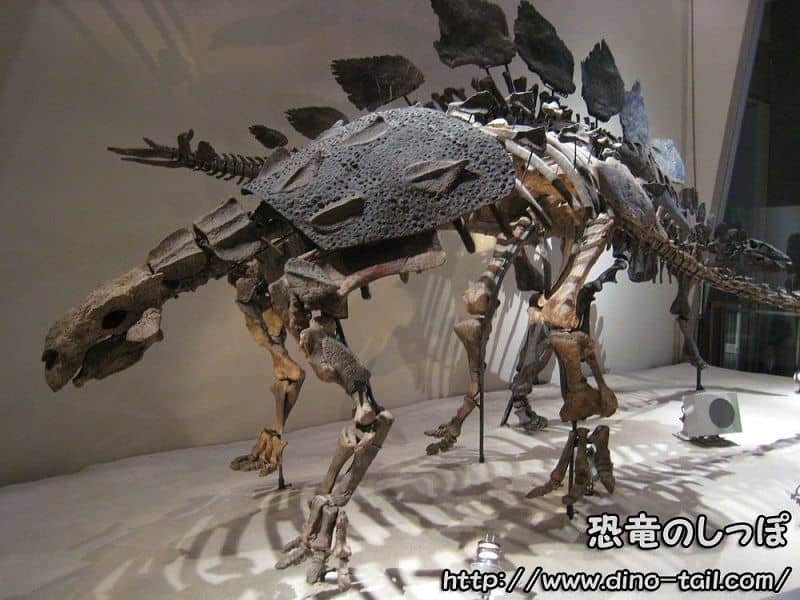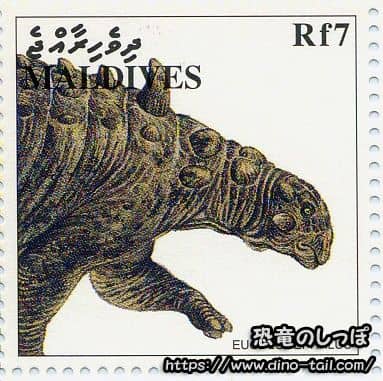About Euoplocephalus
| Scientific Name (Genus) | Euoplocephalus |
| Meaning of Name |
Well-armored head
eu-oplos (well-armed) [Greek] - kephalē (head) [Greek] |
| Classification | Ornithischia, Thyreophora (Ankylosauria) |
| Total Length | Approx. 6 - 7m |
| Diet | Herbivorous |
| Period | Late Cretaceous |
| Species | Euoplocephalus tutus |
| Year of Paper Publication | 1910 |
| Genus Name Publication | Lambe, Lawrence M. (1910). Note on the parietal crest of Centrosaurus apertus and a proposed new generic name for Stereocephalus tutus. The Ottawa Naturalist, 24. |
Characteristics
Euoplocephalus was a representative dinosaur of the Ankylosauridae family that lived in North America during the Late Cretaceous. Its most distinctive features are the bony armor (osteoderms) covering its entire body and the powerful hammer (tail club) at the end of its tail.
This tail club was composed of a large mass of bone and a stiffened posterior part of the tail that supported it. The tail tendons were ossified to increase their strength, integrating a flexible "handle" with a heavy "tip." Studies have estimated that this hammer had the devastating power to shatter the leg bones of tyrannosaurids.

More than 15 fossils of Euoplocephalus have been discovered since 1902, making it one of the most well-studied genera of armored dinosaurs.
Fossil trackways have also been found, indicating that it was not particularly slow.
The teeth of Euoplocephalus, a member of the Ankylosauridae, were small and not well-suited for grinding plants. It is thought to have used its wide beak to crop low-lying vegetation in bulk, which was then fermented and digested in its body.
A surprising feature common to ankylosaurid dinosaurs is the presence of bony "eyelids" (palpebral bones). Euoplocephalus also had this feature, allowing it to protect its vulnerable eyeballs with a bony shutter just by closing its eyes. Additionally, the inside of its skull had a very complex, winding nasal passage, which is thought to have helped warm and moisten the air it breathed, as well as to produce loud sounds for communication.
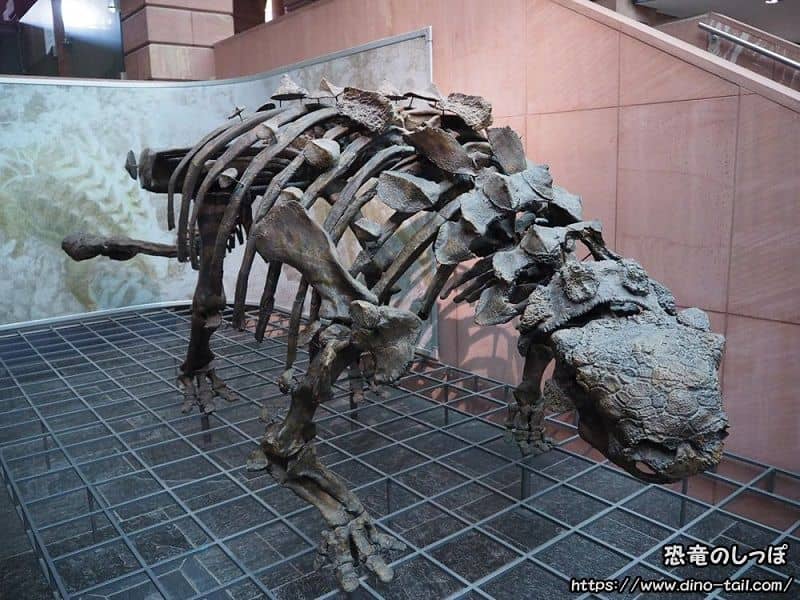
Senckenberg Naturmuseum, Germany.
Discovery and Publication
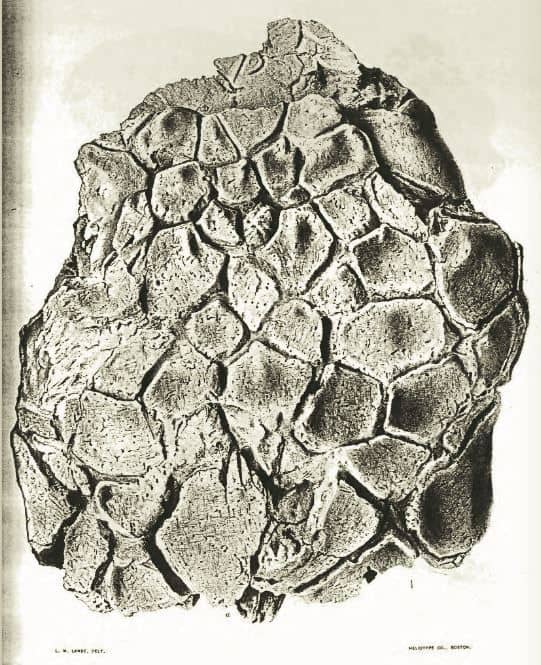
Source: Lambe, Lawrence M. (1902). New genera and species from the Belly River Series (mid-Cretaceous). Geological Survey of Canada Contributions to Canadian Palaeontology, 3.
In August 1897, Canadian paleontologist Lawrence Morris Lambe excavated a skull in the Red Deer River area of Alberta, Canada. In 1902, based on this skull fossil (specimen CMN 0210), he described the new genus and species Stereocephalus tutus.
However, it was discovered that the genus name Stereocephalus was already in use for an insect, so it was renamed Euoplocephalus tutus in 1910.
In 1964, German paleontologist Oskar Kuhn proposed that Euoplocephalus was synonymous with Ankylosaurus, but in 1971, Walter Coombs published a paper on the diversity of armored dinosaur skulls, and the genus name was revived.
Diversity Born from a "Wastebasket": A Major Shift in Research History
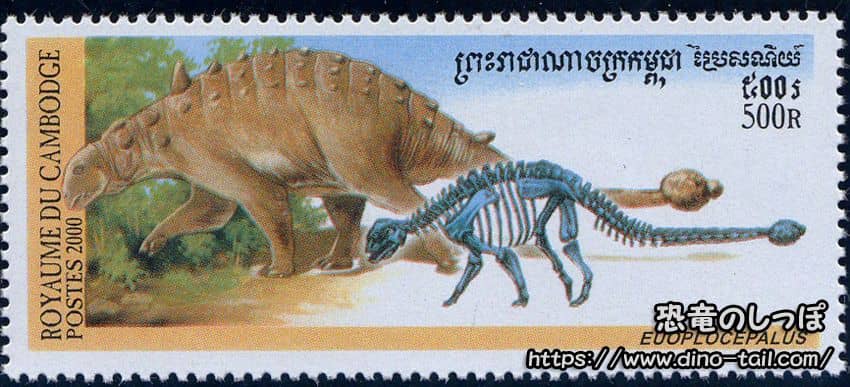
For many years, Euoplocephalus was treated as a "wastebasket taxon," where most ankylosaurid fossils from the Dinosaur Park Formation in Canada were classified. As a result, it was considered the "best-known armored dinosaur."
However, in the 2010s, a detailed re-examination of these fossils by a research team led by Dr. Victoria Arbour revealed that many of the specimens previously assigned to Euoplocephalus were actually different genera of dinosaurs, such as Anodontosaurus and Scolosaurus .
This research showed that a much greater diversity of ankylosaurid dinosaurs lived in North America during the Late Cretaceous than we previously thought. Currently, only a very small number of specimens, including the originally described skull, can be definitively identified as Euoplocephalus tutus. This is a fascinating example of how scientific progress can overturn long-held beliefs.
Euoplocephalus Stamp & Fossil Gallery
